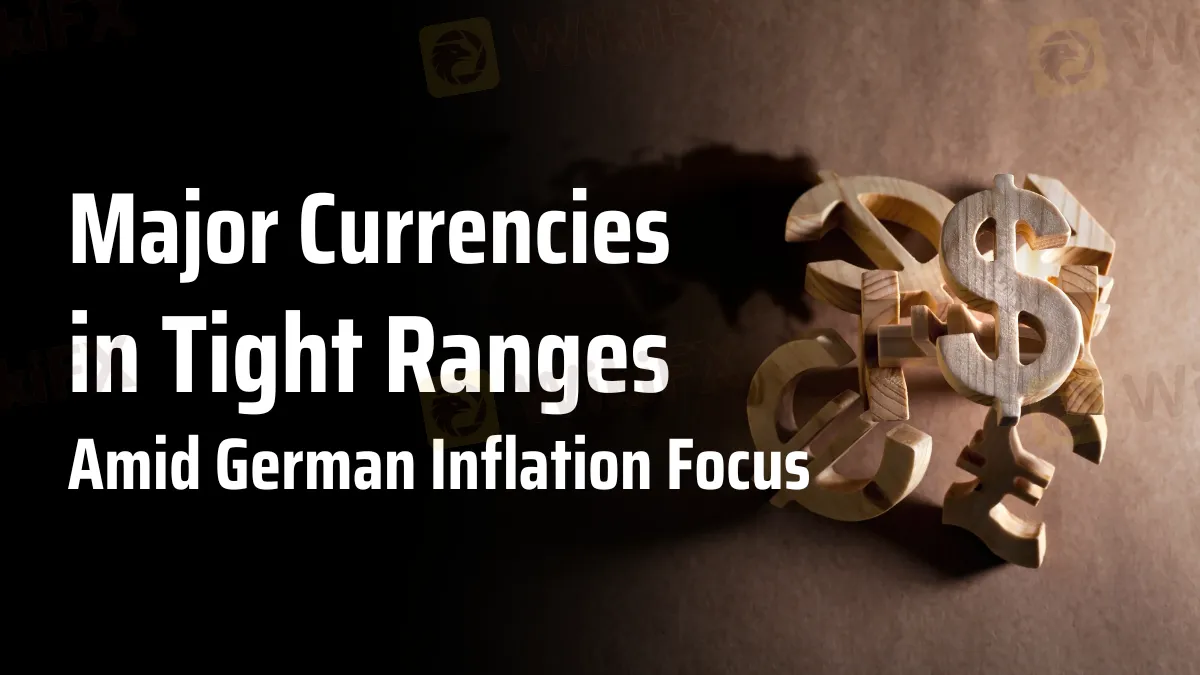简体中文
繁體中文
English
Pусский
日本語
ภาษาไทย
Tiếng Việt
Bahasa Indonesia
Español
हिन्दी
Filippiiniläinen
Français
Deutsch
Português
Türkçe
한국어
العربية
Major Currencies in Tight Ranges Amid German Inflation Focus
Abstract:Major currency pairs remain steady as markets focus on German CPI data. USD maintains strength with US yields, while GBP and EUR show mixed trends.

Market players have been closely watching important economic data during the first half of the week, which has made it difficult for major currency pairings to make obvious moves. The U.S. Dollar (USD) Index held barely above the 104.50 mark on Tuesday, thanks to a little rebound. Now, all eyes are on Germany's impending Consumer Price Index (CPI) figures, which may provide insight into the country's economic status. During American trading hours, the Federal Reserve (Fed) will provide new data for investors to analyze in the form of the Beige Book.
The Dollar's Stability Persists
Positive consumer confidence data from the United States and a yield on 10-year US Treasury notes that is more than 2% higher have both contributed to the USD's endurance. The U.S. dollar was strong vs. its competitors early Wednesday as the 10-year U.S. bond yield stayed unchanged at over 4.5 percent. The opposite was true for U.S. stock index futures, which were in the red after Tuesday's small advances on Wall Street.
Real Currency and Economic Facts
For Australia, the most recent figures show that the CPI increased by 3.6% month-on-month in April, which was higher than the market forecast of 3.4% and follows a 3.5% rise in March. The ANZ Business Confidence Index, on the other hand, dropped from 14.9 in April to 11.2 in May. Trading over 0.6650 was the most recent sight for the AUD/USD pair, which managed to gain ground despite the mixed data.
Statements about the Japanese Yen and the Bank of Japan
As early as Wednesday morning, Seiji Adachi, a board member of the Bank of Japan (BoJ), said that the central bank is still not persuaded that the price goal can be kept, highlighting the need to keep monetary policy very loose. As a result of these comments, the USD/JPY pair stayed put, moving sideways around 157.00.

The Exchange Rate between the Euro and the British Pound
While European trading hours were underway, the Euro (EUR) saw some volatility. On Tuesday, the EUR/USD pair rose to 1.0900, lost steam, and fell to approximately 1.0850 before finishing the day almost unchanged. Staying close to Tuesday's closing levels, the two were silent early Wednesday.
Although it failed to maintain its gains, the British Pound (GBP) finished the day flat at 1.2750, having reached its highest level in over a month at 1.2800 on Tuesday. Near 1.2770 on Wednesday morning, the British pound was slightly higher against the U.S. dollar.
Performance of Gold
On Tuesday, gold rose for three days in a row, but the increase in U.S. rates limited its further advances, sending the XAU/USD pair tumbling down around $2,350. As with other indicators of market mood, changes in U.S. Treasury rates continue to impact the price of the precious metal.
In conclusion
This week, currency traders will be keeping a close eye on two releases that are sure to give crucial insights: the Federal Reserve's Beige Book and the German Consumer Price Index. The USD's tenacity is still influencing the larger currency market scene, thanks to strong U.S. economic data and steady Treasury rates. On the other hand, different economic statistics and remarks from central banks have caused the EUR, GBP, and AUD, among other major currencies, to display contradictory tendencies. Most investors are still on the sidelines, waiting for more solid evidence to help them make trading choices in the days ahead.
You also access the latest news in the financial market here.

Disclaimer:
The views in this article only represent the author's personal views, and do not constitute investment advice on this platform. This platform does not guarantee the accuracy, completeness and timeliness of the information in the article, and will not be liable for any loss caused by the use of or reliance on the information in the article.
Read more

Why Trade Agreements Matter to Nations
In today’s interconnected world, trade agreements serve as the foundation for stable and predictable international commerce.

Trade Fights Are Heating Up—What Happens Next?
Global financial markets have become increasingly reactive to even minor developments in international trade talks.

Juno Markets Upgrades to FYNXT PAMM
Juno Markets has successfully upgraded its managed account infrastructure by integrating FYNXT’s Percent Allocation Management Module (PAMM) system.

Italy’s CONSOB Blocks Sites of ITradingFX and NEX TRADE in Latest Crackdown
Italy’s Companies and Exchange Commission (CONSOB) has ordered Internet service providers to block access to nine unauthorized investment websites, including “ITradingFX” and “NEX TRADE,” as part of its ongoing effort to curb abusive financial services Consob.
WikiFX Broker
Latest News
Think Scams Won’t Happen to You? That’s Exactly What Scammers Count On
Currency Calculator


